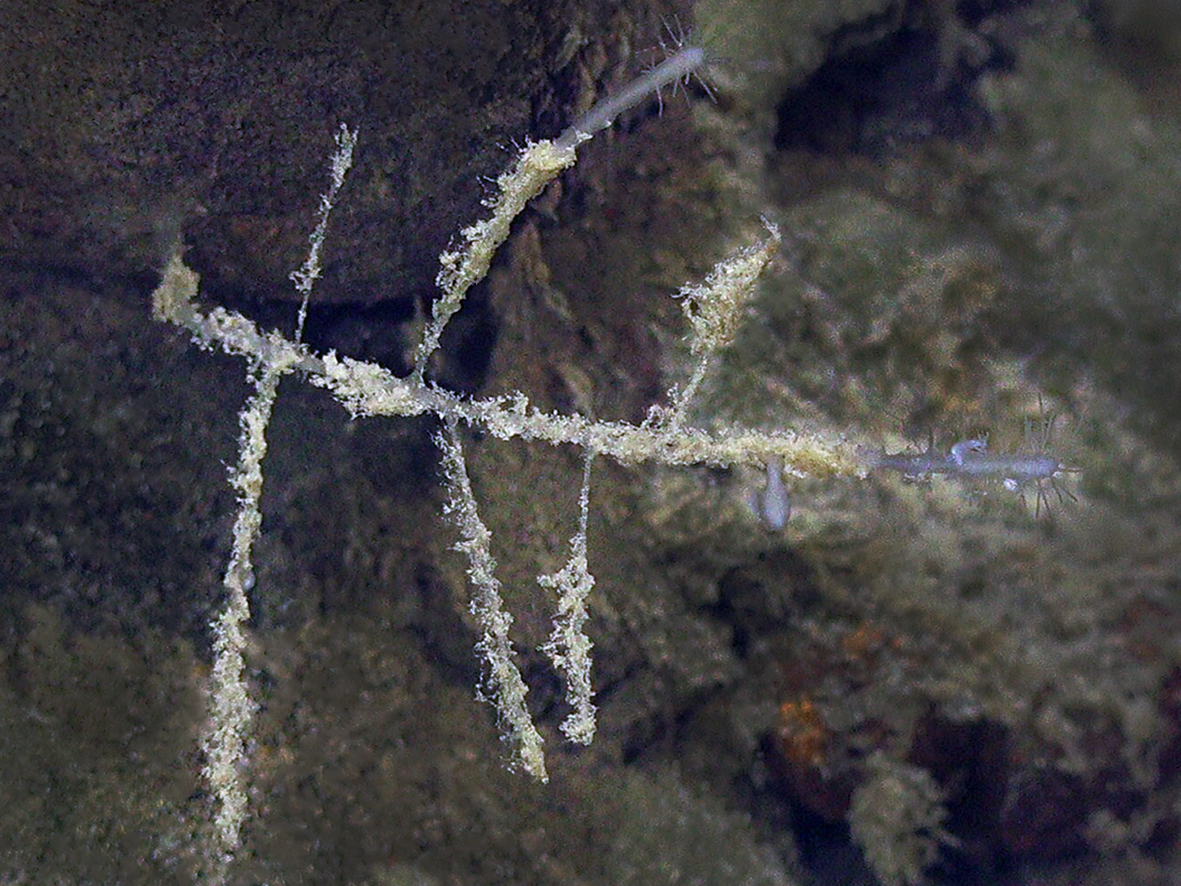News release
From:
Queensland Museum scientists have described six new-to-science species of carnivorous sponges from the family Cladorhizidae.
Carnivorous sponges, known for capturing prey with specialised structures, represent a unique branch of marine life. Traditionally, these distinctive marine organisms were collected for scientific study by trawling the ocean floor, but recent advances in Remotely Operated Vehicle (ROV) technology have revolutionised researchers’ ability to study these fascinating organisms in their natural habitats.
This latest discovery was made during deep-sea expeditions conducted by the Schmidt Ocean Institute, utilising their ROV the SuBastian to explore the rich biodiversity of Western Australia’s underwater landscapes.
Queensland Museum Collection Manager of Sessile Marine Invertebrates and lead author of the scientific paper, Dr Merrick Ekins, said that during the expeditions he was able to direct the ROV remotely from his desk at the museum.
“Our research underscores the importance of deep-sea exploration and the role of technological advancements in uncovering marine biodiversity,” Dr Ekins said.
“These sponges showcase the incredible adaptability of life in extreme environments and challenge our understanding of marine ecosystems.”
“The implications of these discoveries extend beyond mere classification; they highlight the necessity of protecting these fragile ecosystems, which are under threat from climate change and human activity,” Dr Ekins said.
The new species join a growing list of carnivorous sponges, bringing the total known species in Australian waters to 35. The newly described species include: Abyssocladia johnhooperi nov. sp. Abyssocladia aurora nov. sp. Abyssocladia janusi nov. sp. Axoniderma challengeri nov. sp. Cladorhiza vanessaekins nov. sp. and Nullarbora ningalooa nov. sp.
The expeditions traversed the Ningaloo Canyons and Southwest Australian canyons, revealing an astonishing array of life at depths previously inaccessible to scientists, highlighting the vast and largely unexplored biodiversity found in deep-sea ecosystems.
Queensland Museum CEO Dr Jim Thompson said these new-to-science species enhance our knowledge of the Cladorhizidae family and highlight the importance of ongoing exploration and conservation of marine biodiversity.
“Describing and researching these new species of carnivorous sponges provides critical insights into the complex marine ecosystems along the Queensland coastline, highlighting the biodiversity across regions and the importance of conservation efforts.
“This scientific paper showcases the vital research of Queensland Museum scientists,” Dr Thompson said.
“Each time a new-to-science species is described, it reminds us that exploring and classifying the wonders of our natural world is important for conservation and ecological knowledge.”
The paper was recently published in Scientific Reports https://doi.org/10.1038/s41598-024-72917-8
Abyssocladia johnhooperi sp. nov.
Etymology. Named for after John N. A. Hooper who is a prominent sponge taxonomist and introduced the first author into the wonderful world of sponges.
Distribution. This species is presently known only from the type locality in Cape Range Canyon, Ningaloo region, mid Western Australia, from abyssal depths.
Abyssocladia aurora sp. nov.
Etymology. Aurora the Roman goddess of dawn.
Distribution. This species is presently known only from the type locality in Cape Range Canyon, Ningaloo region, mid Western Australia, from abyssal depths.
Abyssocladia janusi sp. nov.
Etymology. Named after the Roman God Janus, who has two or four faces, in recognition of the many faces of the sponge body.
Distribution. This species is currently known from the type locality Knob C in the Bremer Canyon system, south Western Australia, Australia, from abyssal depths.
Axoniderma challengeri sp. nov
Etymology. This species is named for its resemblance to Axoniderma longipinna (Ridley & Dendy 1886) described from the Challenger expedition.
Distribution. This species is presently known only from the type locality in Cape Range Canyon, Ningaloo region, mid Western Australia, from abyssal depths.
Cladorhiza vanessaekins sp. nov.
Etymology. Named after the first author’s sister Vanessa Ekins, in recognition of her invaluable service to the environment and her endeavours in revegetating riparian areas with native trees, to which this species represents arborescent morphology.
Distribution. This species is presently known only from the type and paratype localities in Cape Range Canyon, Ningaloo region, mid Western Australia, from abyssal depths.
Nullarbora ningalooa sp. nov.
Etymology. Named after Ningaloo, the region in mid Western Australia from which the species was collected.
Distribution. This species is presently known only from the type and paratype localities in the Cape Range Canyon, Ningaloo region, mid Western Australia, from abyssal depths.
Multimedia





 Australia; QLD; WA
Australia; QLD; WA


